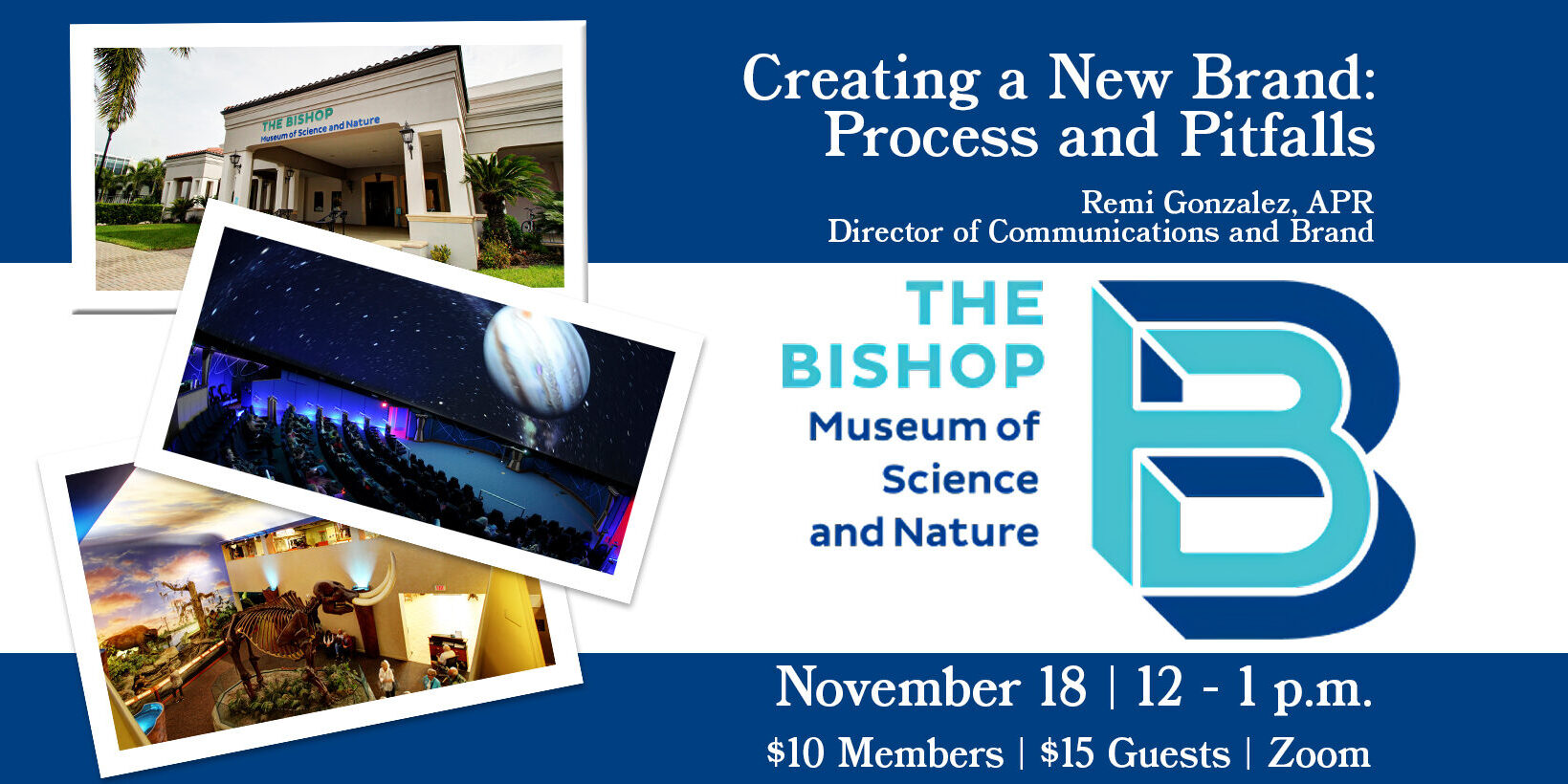
Recently, during our November professional development event, we invited Remi Gonzalez, APR, to talk about rebranding and the common pitfalls organizations face in the process.
Gonzalez, Director of Communications and Brand at The Bishop Museum of Science and Nature, spoke from personal experience on this topic. In April 2019, she successfully helped the 70-year-old organization, formerly known as the South Florida Museum, launch a new brand identity.
She noted that one of the biggest pitfalls of the rebranding process is that it can be very time-consuming, or take longer than expected. In the case of the South Florida Museum, the process started in 2007, when they identified several key issues facing the organization. However, real action wasn’t taken until 2012, once a strategic plan had been developed. A marketing committee, consisting of board members and staff, was then formed to help lead the organization through the rebranding process.
While board and staff input gave valuable insight, the museum brought on a marketing agency to help provide an outside perspective. Market research, such as surveys and focus groups, was conducted and community input was gathered throughout the entire process. Having feedback from key stakeholders, as well as a clear consensus among the committee, was critical as the options for new names and brand identities were presented.
Once the final decision on the new name and brand had been reached, it was time for launch. Internally, the organization began implementing the new branding one month before it went public. This included a new brand/style guide, email signatures, name tags, business cards, FAQs, etc. In total, it took about 1.5 to 2 months to update all internal signage.
In case you missed the program, here’s a recap of some other key takeaways:
Branding – What is it and why is it important?
- What is a brand? A brand is the personality of your organization… the entire experience…how your audience thinks about you, feels about and interacts with you.
- Remember – a brand is not just a logo. It’s an experience!
- Great brands establish an emotional connection and promise a consistent experience with either consumers/audiences every time (example: Apple).
- Strong brands align and harness internal assets (employees embrace and personify the brand) and sell tangible and intangible values (example: good design).
- If you’re a non-profit looking to rebrand, think about your organization’s mission (what you do and why you do it).
Why consider rebranding?
In the case of the South Florida Museum, they decided to rebrand to:
- Clarify location and offerings
- Reflect how the organization has changed
- Update outdated perceptions of the organization
Other reasons why organizations and nonprofits may decide to rebrand include:
- Change in leadership
- Merger or acquisition
- To reach new audiences
- Evolving audience priorities due to
- Short attention spans
- Technology
- Content preferences / learning preferences (more visual)
Potential pitfalls during the process:
- Rebranding can be time-consuming!
- Timing, budget priorities – if everything is important, nothing is important.
- You must have CLEAR GOALS for research. With too many goals, your findings are more diluted, which results in less value.
- Research can unveil difficult findings. Be open to learning things that are hard to hear.
- When engaging the community for input, be prepared that someone else can break your news before you’re ready.
If you were an event attendee, a recording has been made available. Please contact info@cwcfpra.com for more information.
